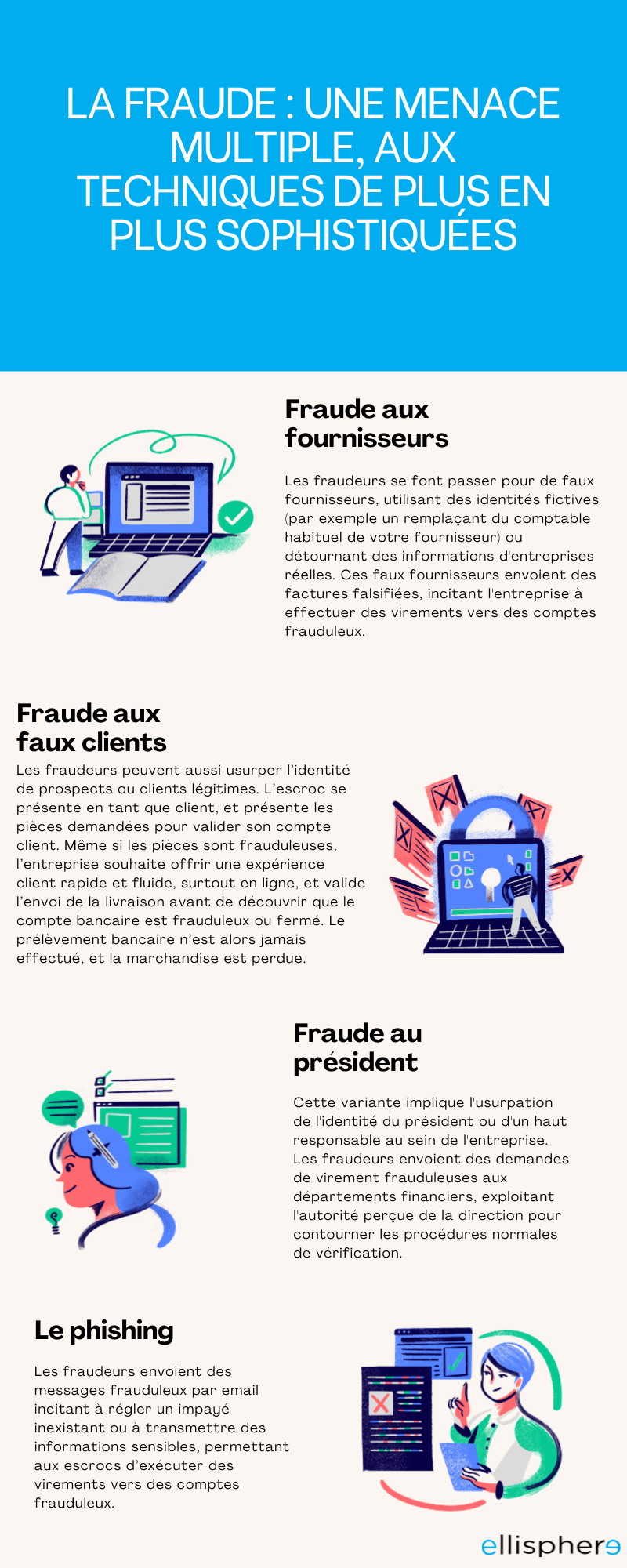Fraud in the BtoB sector: an exploding phenomenon
Today, all BtoB companies, whatever their sector of activity, face a growing challenge: bank transfer fraud.
The figures are clear: 69% of companies suffered at least one fraud attempt in 2022, and these attempts were successful for 57% of these companies, according to the Euler/Hermès and DFCG Fraud Barometer 2022.
According to the Allianz/DFCG study, 91% of companies with sales in excess of €100 million suffered at least one fraud attempt in 2022. The sheer volume of financial flows, combined with fragmented teams, makes these organizations particularly vulnerable.
Indeed, while the digitization of processes has undeniably simplified business processes, it has also created new opportunities for fraudsters, who exploit the flaws in digital systems, specifically targeting financial transactions between companies.
A multiple threat, with increasingly sophisticated techniques
Identity theft, which consists in using the personal data of a third party with whom the company has a relationship in order to obtain a bank transfer, remains the preferred technique of fraudsters today.
It takes many forms, including :

Protecting yourself against fraud: a shared awareness
As a multi-faceted threat, fraud is undeniably becoming a major issue in BtoB credit risk management.
For companies, the stakes are just as high. While the damage is of course financial, with an impact on the company's cash flow (financial losses exceeded €50,000 in more than half of all successful frauds in 2022), the repercussions on the reputation and trust of business partners, not to mention the organizational implications , are not to be overlooked either.
Having a global view of third parties and the associated fraud risks is therefore essential for finance departments. And this priority is now widely shared by a majority of companies: 46% of general managers plan to adopt a dedicated anti-fraud solution by 2023 (Trustpair/OpinionWay/SAP survey).
Towards process automation for anti-fraud solutions
Today, 35% of companies still carry out manual RIB checks, usually at random or linked to specific events (high amounts or linked to "sensitive" countries). Trustpair/OpinionWay/SAP survey
But these often time-consuming manual verification processes are no longer sufficient in the face of the increasingly sophisticated techniques used by fraudsters.
Hackers are becoming increasingly professional, developing tools that enable them to steal identities with great ease. These innovations are developing at a faster pace than companies, which are systematically lagging behind the fraudsters.
Some hackers are able to intercept your phone calls, impersonating both supplier and customer, making manual checks and counter-calls totally ineffective.
We need to be aware of theasymmetry between the technical means used by fraudsters, and those used by companies to defend themselves. Manual control is no longer sufficient, and automation has become an imponderable in the fight against fraud.
With this in mind, Ellisphere is adding 2 new "tools" to its risk management arsenal to enable finance departments to effectively combat transfer fraud:
Automatic IBAN verification
It is used to check that a company's identity (SIRET, SIREN) matches its bank details, and also to verify that the account is active, before entering into a relationship with a third party or transferring funds.
This verification can be carried out individually in real time, or en masse the day after the request, via API or a web platform.
Vigilance score
The vigilance score (scale out of 100, with 100 being the maximum risk) identifies "empty shells" or phantoms with no real activity, but with a vocation for fraud. The score detects these risk profiles on the basis of multiple signals of more or less complex "atypical behavior", combined with artificial intelligence: several simultaneous balance sheet publications, changes of address within a short space of time, analysis of financial elements highlighting inconsistencies, etc.
Bank transfer fraud in the BtoB sector is a complex challenge, for which the integration of automated tools such as automatic IBAN verification or vigilance scores are the most appropriate responses, in a constantly evolving digital environment.


